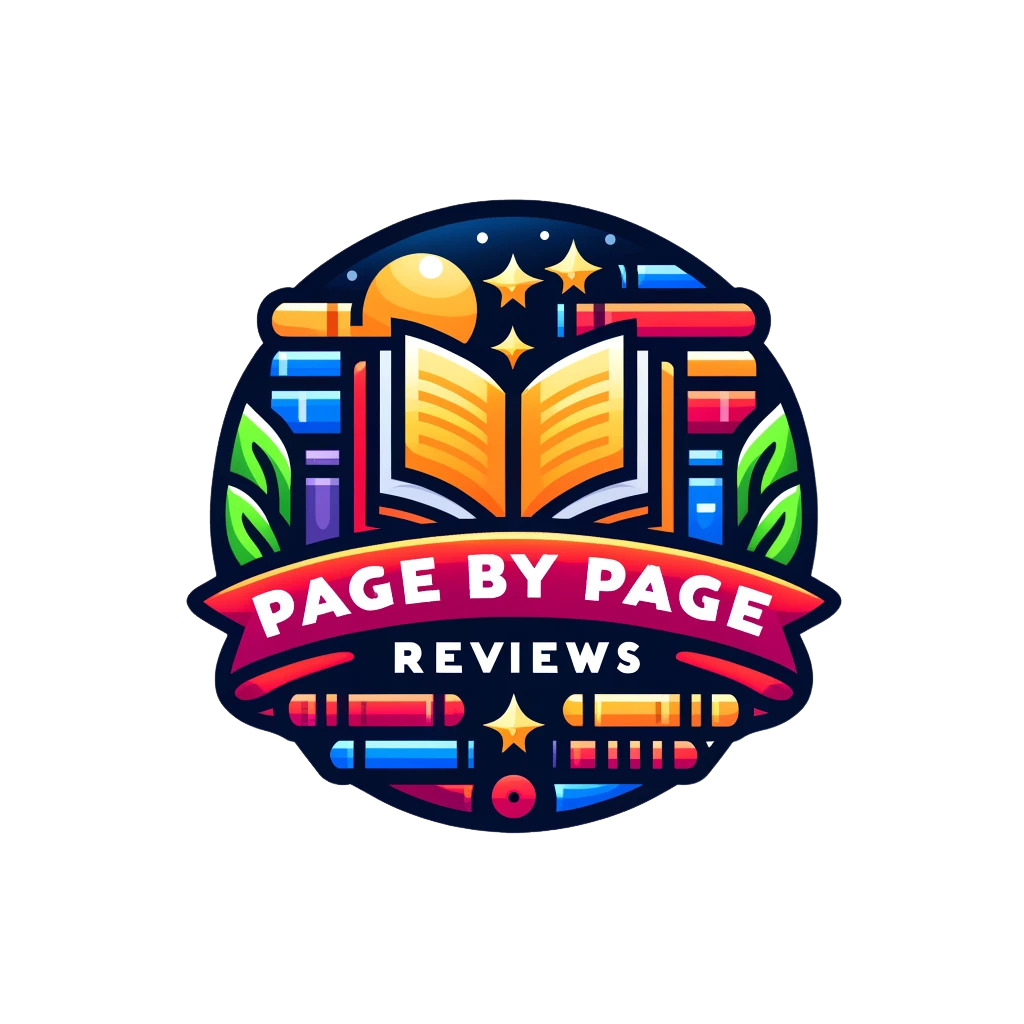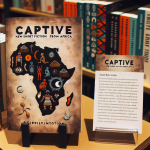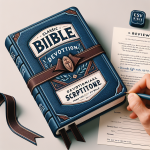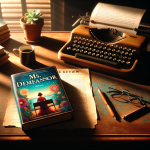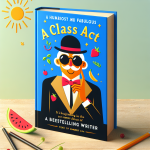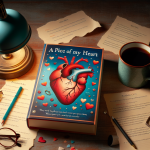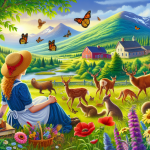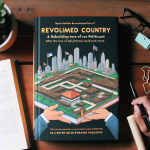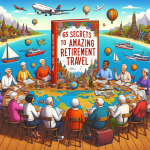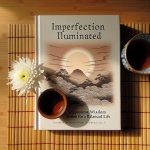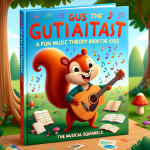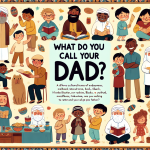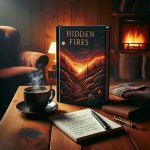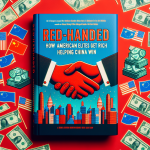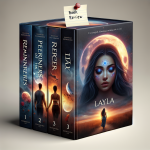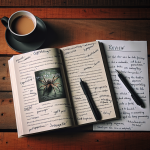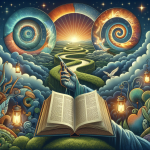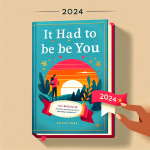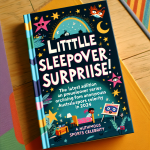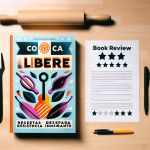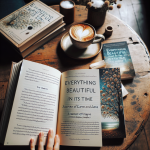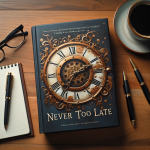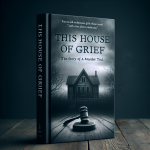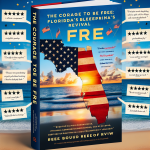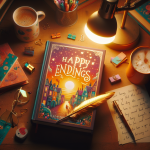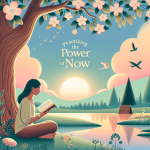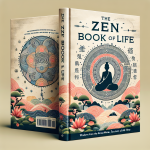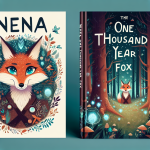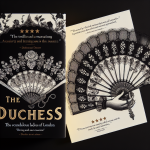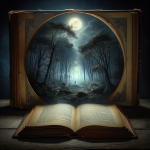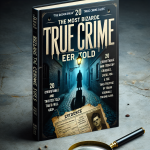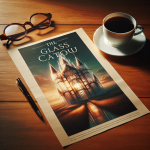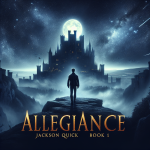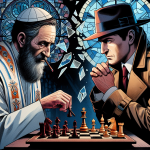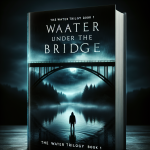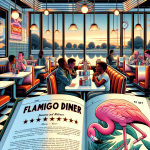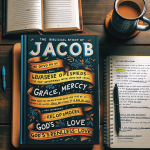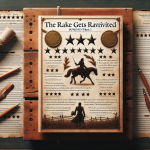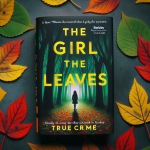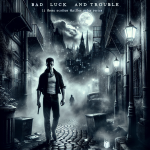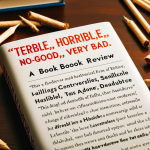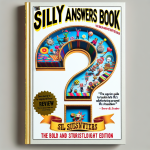As an Amazon Associate I earn from qualifying purchases.
Unveiling the Magical Mystery: A Captivating Review of “The Cottingley Secret: A Novel”
If you're searching for a spellbinding tale that seamlessly intertwines history, mystery, and a dash of fairy magic, Hazel Gaynor’s “The Cottingley Secret: A Novel” is your next must-read sensation. This enthralling book takes readers on a dual narrative journey, flipping between the true life events of the 1917 Cottingley Fairies photographs and a modern-day woman grappling with her own life’s mysteries. Gaynor’s novel does more than tell a story; it solves a literary puzzle that blends historical fact with imaginative fiction, pulling readers into a world where the lines between reality and fantasy blur with enchanting ease.
Gaynor masterfully addresses the significance of belief in the unseen and the historically contentious nature of the Cottingley Fairies themselves, a hoax that captivated the imaginations of even Sir Arthur Conan Doyle. The Cottingley Secret not only revitalizes this century-old enigma but also challenges readers to explore themes of hope, the innocence of childhood, and the power of belief. It provides a touching narrative that resonates on multiple levels, offering a deep sense of closure for both the characters within and the readers who embark on this fascinating journey.
Plot
The Cottingley Secret intertwines two timelines, revealing a captivating narrative that blends history with fiction. The story begins in 1917, focusing on two young cousins, Frances Griffiths and Elsie Wright, who claim to have photographed real fairies at the bottom of their garden in Cottingley, England. These photographs eventually catch the attention of famous figures like Sir Arthur Conan Doyle, creating a media sensation and sparking debates on the existence of fairies. The novel then shifts to the present day, where Olivia Kavanagh inherits her grandfather’s bookshop and discovers an old manuscript hidden within its walls. This manuscript, written by Frances, sheds light on the true story behind the fairy photographs and their impact on Frances and Elsie's lives. As Olivia delves deeper into the past, she unravels secrets that have long been buried, leading her to reflect on her own life and choices.
Characters
The novel features a rich tapestry of characters, each contributing to the depth of the story. Frances Griffiths, one of the two cousins involved in the fairy photographs, is portrayed as an imaginative and free-spirited young girl who yearns for a sense of belonging. Elsie Wright, older and more skeptical, goes along with the fairy photographs partly to protect Frances and partly to entertain herself. In the present timeline, Olivia Kavanagh, who inherits her grandfather’s bookshop, is depicted as a woman at a crossroads, dealing with her own personal struggles and a sense of loss. The inclusion of historical figures like Sir Arthur Conan Doyle adds historical credibility and intrigue to the storyline.
Writing Style
Hazel Gaynor’s writing in The Cottingley Secret is evocative and lyrical, capturing the whimsical and emotional essence of the story. She skillfully shifts between the historical and contemporary settings, maintaining a balanced narrative that keeps the reader engaged. Her descriptive prose vividly brings to life the enchanting world of Cottingley and the cozy atmosphere of the old bookshop. Gaynor’s ability to create a sense of wonder and curiosity mirrors the themes of the novel, drawing readers into the magic and mystery of the Cottingley fairies. The alternating chapters between past and present are seamlessly woven together, making the complex narrative structure feel cohesive and fluid.
Setting
The novel is set in two distinctive locations and time periods, each richly detailed and immersive. The historical setting of Cottingley, England, during the early 20th century, is depicted with a sense of quaint rural charm and post-World War I innocence. The lush gardens and serene landscapes of Cottingley play a crucial role in creating the enchanting backdrop for the fairy photographs. In contrast, the present-day setting revolves around an old bookshop in Ireland, inherited by Olivia. The bookshop, with its dusty shelves and hidden secrets, provides a cozy and introspective space where Olivia can explore her grandfather’s legacy and her own identity. Each setting enhances the thematic elements of wonder, discovery, and self-reflection.
Unique Aspects
The Cottingley Secret stands out for its unique blend of historical events and fictional storytelling. The incorporation of the true story of the Cottingley fairies adds a layer of authenticity and intrigue to the novel. Gaynor’s exploration of themes such as belief, imagination, and the power of storytelling is masterfully intertwined with the real-life mystery of the fairy photographs. Additionally, the dual timeline structure allows for a multifaceted exploration of how past events shape present lives, offering readers a deeper understanding of the characters’ motivations and growth. The novel also highlights the enduring impact of childhood experiences and the ways in which they can influence one’s perception of reality. Through its seamless fusion of history, fiction, and fantasy, The Cottingley Secret offers a unique and thought-provoking reading experience.
The Cottingley Secret: A Novel – Pros
Engaging Dual Narrative
The dual narrative structure in “The Cottingley Secret” is intricately woven, engaging the reader by alternating between past and present scenarios. This method enriches the story, providing multiple perspectives and enhancing emotional depth. By connecting two timelines, the readers remain enthralled, preventing monotony and adding layers of complexity that appeal to fans of historical fiction and modern storytelling alike.
Rich Historical Context
The novel excels in its portrayal of the historical context surrounding the Cottingley fairies, grounding its fictional elements with real events. This blend of fact and fiction offers a unique reading experience, making the story more believable and immersive. Historical accuracy provides educational value alongside entertainment, leading to a more fulfilling reader experience that resonates with those who appreciate historically inspired narratives.
Character Development
Character development is a strong suit in “The Cottingley Secret.” The detailed portrayal of both contemporary and historical characters allows readers to form strong emotional connections, fostering a deeper investment in the storyline. Flawed yet relatable characters navigate their personal journeys, making their growth both significant and memorable. This dynamic character progression significantly enhances the reader’s engagement and overall experience.
Enchanting Prose
The prose in “The Cottingley Secret” is notably enchanting, filled with vivid descriptions and poetic language. This stylistic choice captures the magical essence of the story, drawing readers into an imaginative world. The lyrical quality of the writing enriches the sensory experience, making the book a pleasurable read for those who appreciate well-crafted language and atmospheric narratives.
The Cottingley Secret: A Novel – Cons
Predictability in Plot
Despite its engaging narrative, the plot of “The Cottingley Secret” can sometimes shift towards predictability. For readers who are familiar with the historical accounts of the Cottingley fairies, the storyline might lack unexpected twists, diminishing suspense. This predictability might detract from the reading experience for those who prefer mysteries with more unforeseen developments and complex plotlines.
Slow Pacing
The pacing of the novel can be slow, especially in the beginning. This gradual unfolding of events might test the patience of readers who prefer fast-paced novels. Lagging momentum could lead to disengagement, making it challenging for some readers to stay captivated through the initial chapters. For an optimum experience, a more balanced pacing could appeal to a wider audience, maintaining a steady flow of interest.
Secondary Character Underdevelopment
Secondary characters in “The Cottingley Secret” occasionally feel underdeveloped, which can result in an unbalanced narrative. When supporting characters lack depth, it can make certain subplots less intriguing, potentially weakening the overall impact of the story. Readers interested in a robust ensemble cast might find this aspect disappointing, as the main characters dominate the narrative focus, overshadowing the contributions of secondary personas.
Complex Narrative Transitions
While the dual narrative is a strength, it may also pose a challenge with complex transitions between timelines. The shift from past to present and vice versa can sometimes disrupt the reader’s immersion, making it hard to maintain a seamless reading flow. This complexity in navigating between two eras might confuse or frustrate some readers, especially those who favor a more straightforward narrative structure.
Frequently Asked Questions (FAQ) – The Cottingley Secret: A Novel Book Review
What is “The Cottingley Secret: A Novel” about?
“The Cottingley Secret: A Novel” intertwines two narratives: the true story of the Cottingley Fairies hoax that occurred in 1917 and a modern-day storyline about a woman named Olivia who discovers a manuscript written by her ancestor, involving the fairy photographs. It delves into themes of belief, truth, and the magic of storytelling.
Who is the author of “The Cottingley Secret: A Novel”?
The novel is written by Hazel Gaynor, a well-known author of historical fiction who has penned several acclaimed books.
What genre does the book belong to?
“The Cottingley Secret” is primarily a historical fiction novel with elements of fantasy and mystery, due to its focus on folklore and the famous fairy photographs.
Is “The Cottingley Secret” based on a true story?
Yes, the book is based on a true story. The Cottingley Fairies were a series of photographs taken by two young girls in 1917, which they claimed showed real fairies. These photographs garnered significant public and media attention, even convincing some notable figures of their authenticity at the time.
Do I need to know the history of the Cottingley Fairies to enjoy this book?
No prior knowledge of the Cottingley Fairies is necessary to enjoy the book. The novel provides sufficient background and context, making it accessible to readers unfamiliar with the historical events.
What themes are explored in “The Cottingley Secret”?
The novel explores themes such as the power of belief and imagination, the interplay between truth and deception, the influence of storytelling, and the search for one's identity and purpose.
Is the book suitable for all ages?
While “The Cottingley Secret” is generally appropriate for a wide audience, it is primarily geared toward adult readers due to its complex themes and historical context. Mature younger readers may also find it engaging.
How have readers and critics responded to the book?
The book has received positive reviews from both readers and critics, who have praised its enchanting storytelling, well-researched historical detail, and the seamless blending of fact and fiction.
Where can I buy “The Cottingley Secret: A Novel”?
You can purchase the book from various retailers, including major online bookstores like Amazon, Barnes & Noble, as well as local independent bookstores.
Are there any similar books I might enjoy?
If you enjoyed “The Cottingley Secret,” you might also like other historical fiction novels with elements of magic and folklore, such as “The Girl Who Chased the Moon” by Sarah Addison Allen or “The Little Stranger” by Sarah Waters.
In conclusion, “The Cottingley Secret: A Novel” by Hazel Gaynor stands out as a profoundly engaging and thought-provoking read that seamlessly blends historical intrigue with the magic of storytelling. This novel is much more than just a recount of the famous Cottingley fairies; it delves deeply into themes of belief, family, and the power of hope, making it a valuable choice for a wide range of readers.
One of the core strengths of “The Cottingley Secret” is how it bridges the gap between past and present through its dual narrative structure. The historical narrative, which follows the enchanting tale of Frances Griffiths and Elsie Wright who convinced the world of the existence of fairies, is meticulously researched and vividly brought to life. Meanwhile, the contemporary storyline, featuring Olivia Kavanagh, adds layers of emotional depth as she navigates her own journey of discovery and healing. This duality not only keeps readers invested but also adds a multidimensional perspective to the narrative.
Hazel Gaynor's exquisite writing style is another highlight of the novel. Her ability to evoke the atmosphere of early 20th century England while contrasting it with modern-day life demonstrates her versatility as an author. Gaynor’s descriptive prose allows readers to immerse themselves fully in the story, making the mystical elements of the tale feel tangible and real.
Furthermore, “The Cottingley Secret” is rich with themes that resonate with readers on a deeply personal level. The exploration of belief—whether in fairies, in family, or in oneself—encourages readers to reflect on their own convictions and the nature of truth. The novel also underscores the importance of preserving history and acknowledging the stories that shape our lives, making it a meaningful read not just for history enthusiasts but for anyone interested in the human experience.
In essence, “The Cottingley Secret: A Novel” offers a compelling blend of history, mystery, and emotional depth, making it a remarkable addition to any bookshelf. Readers will find themselves captivated by the intertwined stories, moved by the characters' journeys, and inspired to believe in the extraordinary. Whether you are a fan of historical fiction, contemporary tales, or simply enjoy a well-told story that sparks the imagination, Hazel Gaynor’s novel is a must-read that promises lasting impressions and valuable insights.
Amazon and the Amazon logo are trademarks of Amazon.com, Inc, or its affiliates.
